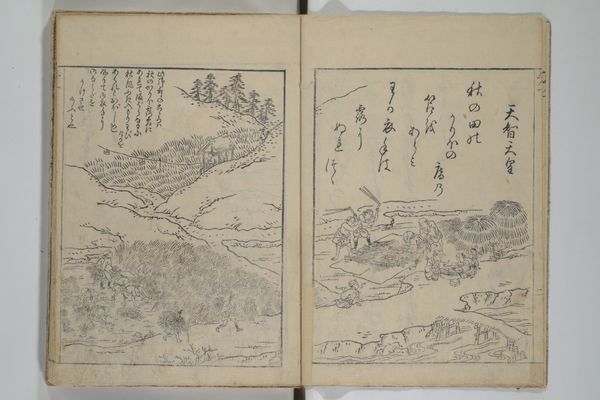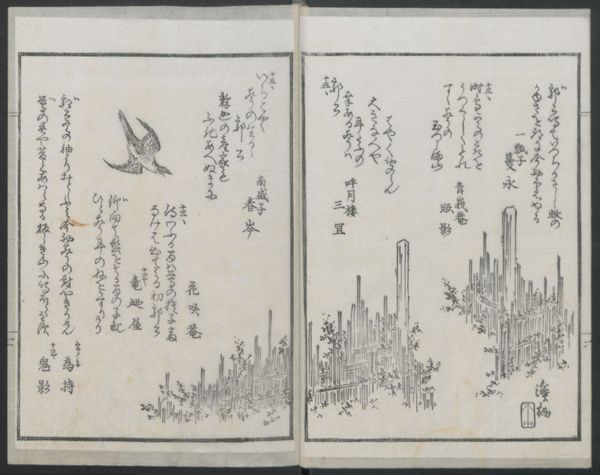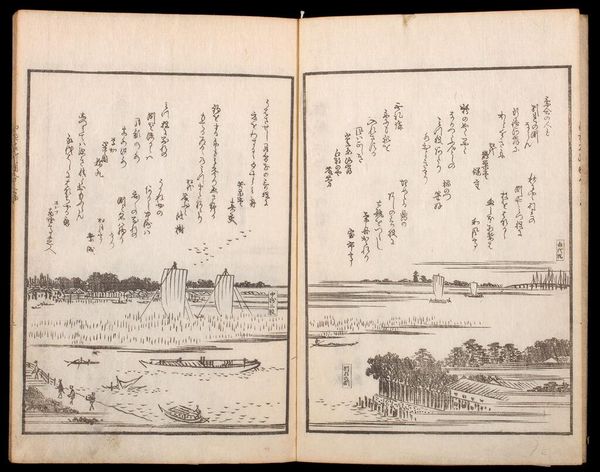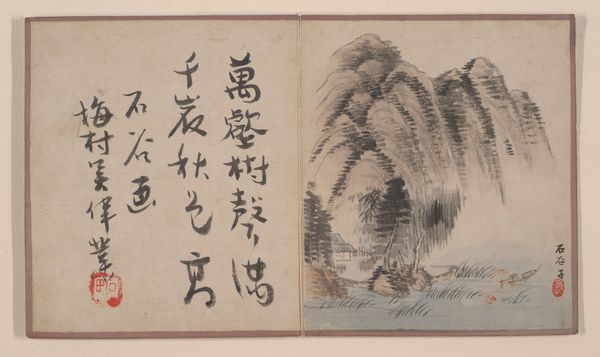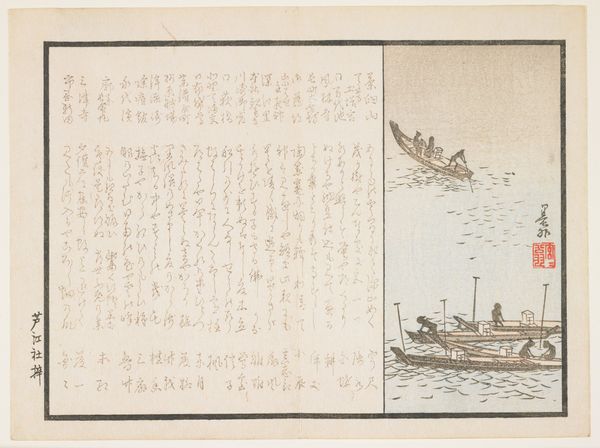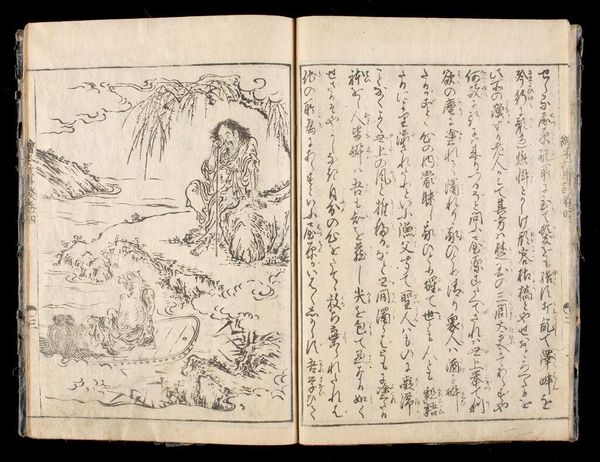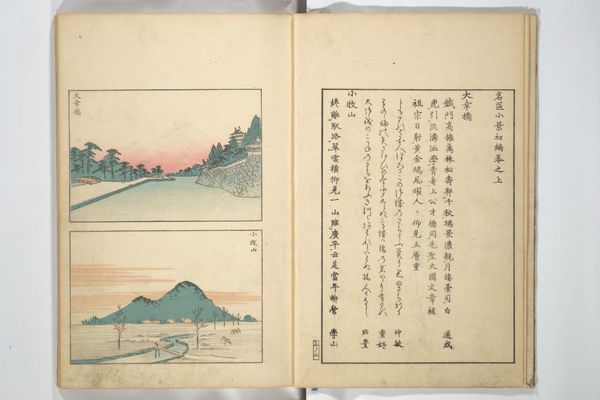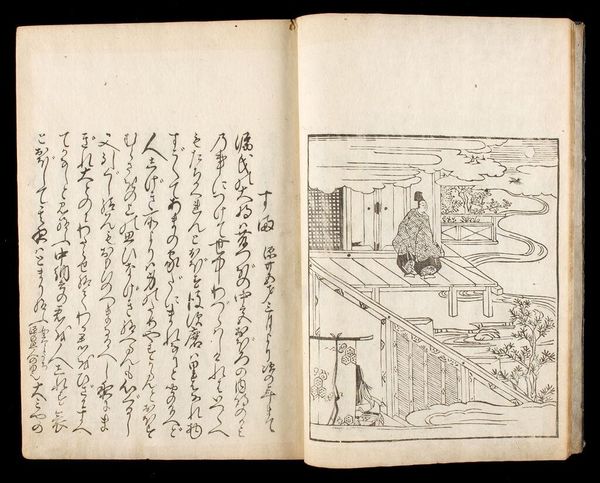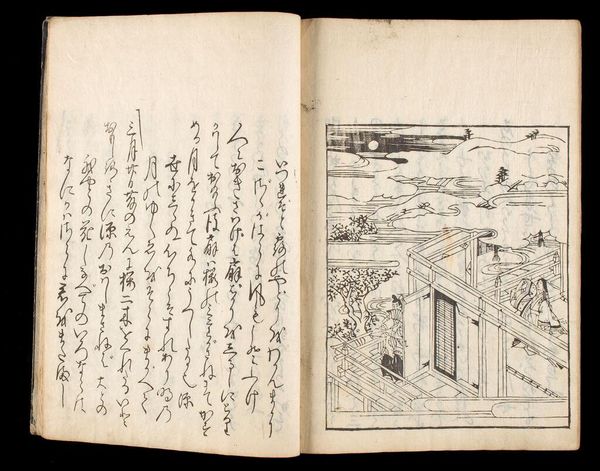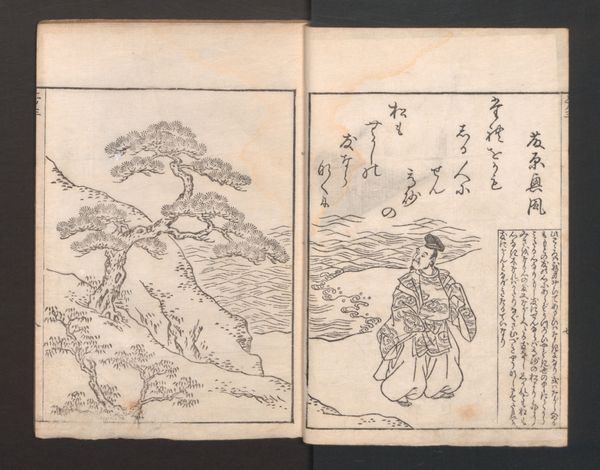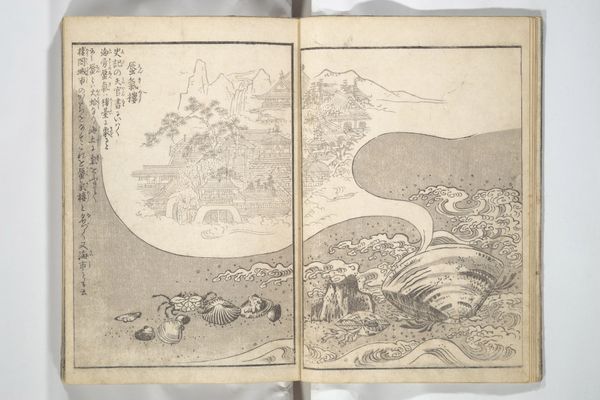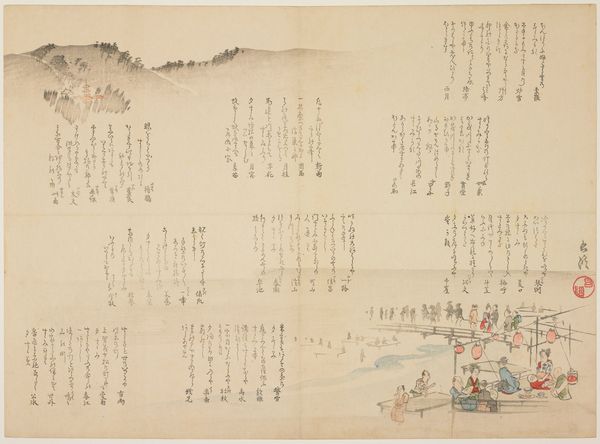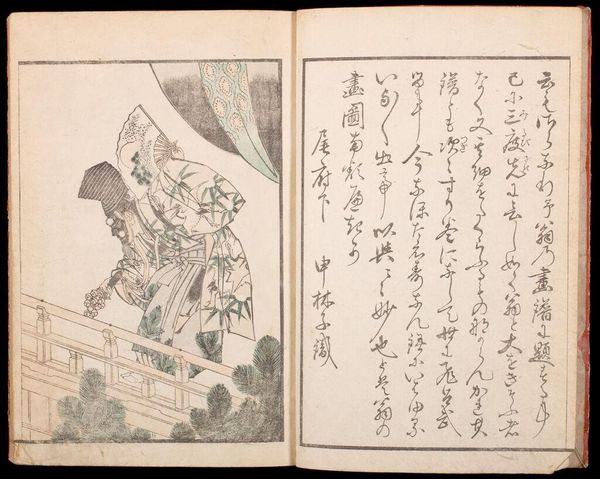
Picture Book on the Communication of Home Precepts part III (Ehon teikin ōrai gehen 絵本庭訓往来下編) 1838 - 1858
0:00
0:00
drawing, print, woodblock-print
#
drawing
#
ship
# print
#
book
#
asian-art
#
landscape
#
ukiyo-e
#
personal sketchbook
#
woodblock-print
#
men
Dimensions: each approximately: 8 7/8 × 6 1/16 in. (22.5 × 15.4 cm)
Copyright: Public Domain
Editor: Here we have Hokusai’s “Picture Book on the Communication of Home Precepts part III,” a woodblock print from between 1838 and 1858. It's quite striking to see these two contrasting scenes juxtaposed on facing pages. The image on the right evokes a sense of journey, maybe even escape, whereas the image on the left is tranquil and domestic. How do you interpret this work in relation to the title and Hokusai’s social context? Curator: That contrast is key, and the title gives us a starting point. "Home Precepts" suggests moral and social guidance. Looking at the book as a whole, considering its function within 19th-century Japanese society, we can see it operating on multiple levels. For whom were these precepts intended? And how might illustrations of travel and idealized landscapes shape their understanding of social roles and expectations? Editor: So, you're suggesting that the imagery might reinforce societal norms rather than just passively reflecting them? Curator: Exactly. Hokusai wasn't merely depicting life; he was participating in a discourse about how life *should* be lived. Consider the prevalence of landscape prints during this era. Who had access to these images? Were they a form of escapism, or did they serve to remind viewers of their place within the social hierarchy and prescribed gender roles? Editor: It’s almost like the image on the left—the domestic scene—becomes a kind of visual instruction, while the ship signifies an unattainable freedom for some. Curator: Precisely. And remember, Hokusai himself navigated a shifting social landscape. Reflecting on that context gives new meaning to this piece. What do you take away from that consideration? Editor: I had been thinking of it purely in aesthetic terms but recognizing the social and gendered dimension provides a new way of thinking about it. Curator: Exactly. These images aren't neutral; they're active participants in the construction of culture.
Comments
No comments
Be the first to comment and join the conversation on the ultimate creative platform.
